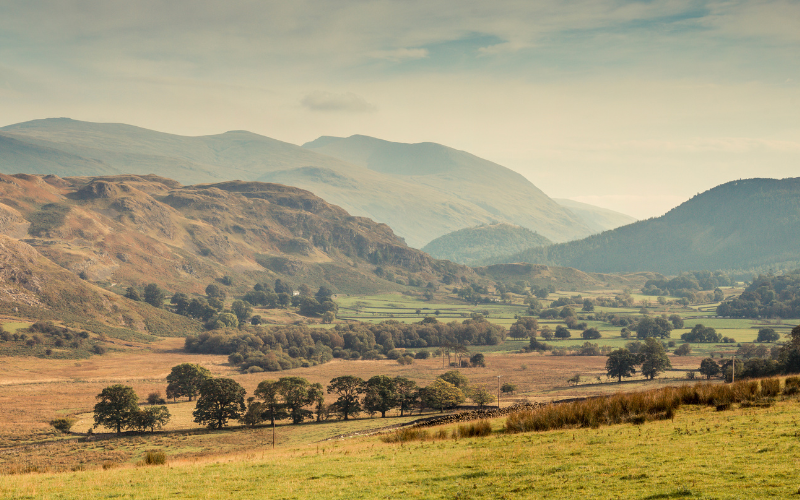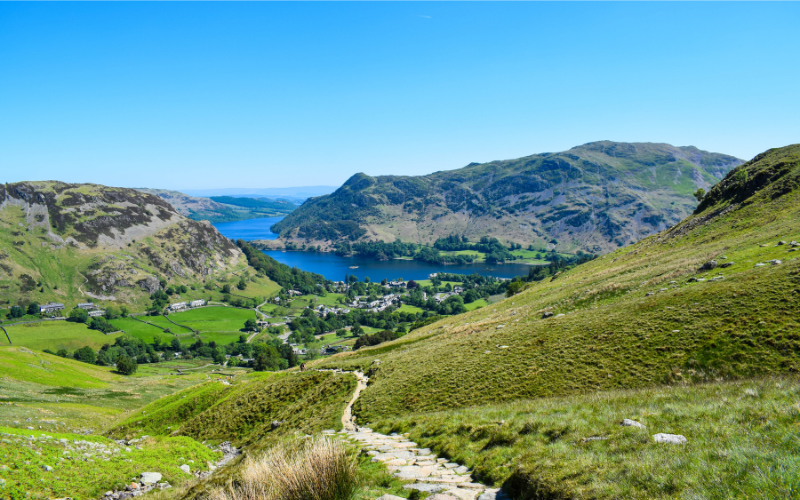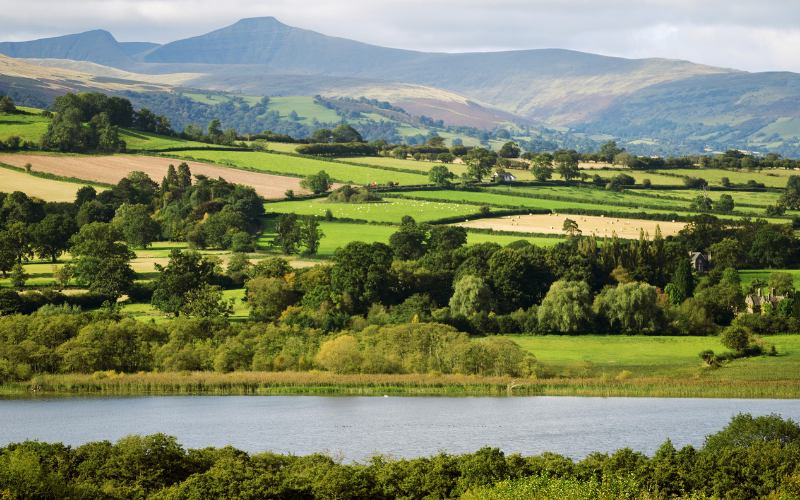
Hiking is one of the most enjoyable ways to experience the natural beauty found throughout the United Kingdom. With a vast network of well-maintained footpaths and coastal trails, the UK offers world-class hiking adventures for all levels.
Walking outdoors provides mental and physical health benefits like reduced stress, increased mobility and vitamin D from sunlight. It’s also a cost-effective way to appreciate breathtaking scenery. The British have enjoyed hiking and rambling for centuries as a pastime and form of leisurely transportation before cars.
A huge part of UK culture, public footpaths have existed formally since the 1940s. Permissive routes allow hiking virtually anywhere, from winding valleys and alpine moors to craggy sea cliffs. With so many amazing options, it can seem daunting to decide where to point one’s boots first. This guide will introduce some of the most celebrated trails in England, Scotland, Wales and Northern Ireland for hiking enthusiasts to experience the best of what the British Isles have to offer.
Table of Contents
- England
- Scotland
- Wales
- Northern Ireland
- Trail Essentials
- Additional trails
- Best Hiking Trails in the UK – Conclusion
- Frequently Asked Questions about Hiking in the UK
England
South West Coast Path
Stretching the entire coastline of Cornwall, Devon, Dorset and Somerset, the south west coast path is a true hiking epic at 630 miles it is the longest national trail in Britain. It traces jagged shorelines, towering sea cliffs and sparkling bays overlooking the Celtic Sea.. Breaking it up into more manageable segments is recommended. Land’s End to Plymouth offers classic coast scenery including cliffs, beaches and fishing villages. Day hikes around St Ives reveal small coves and secluded bays. Dunster, Lyme Regis and West Bay also make excellent bases for multi-day hiking stretches along this piece of England’s rugged shoreline. Be sure to watch for seabirds nesting on the cliffs and dolphins frolicking offshore.
Lake District Trails

In northwestern England’s scenic Lake District National Park, grassy fells tumble down to the shores of idyllic lakes like Windermere, Coniston Water and Ullswater. There are too many phenomenal trails in the lakes to name, but Wasdale is a good starting point for true escapism. The remote valley offers England’s highest mountain Scafell Pike (3,209ft) as well as smaller fells like Lingmell and Red Pike for postcard panoramas. Serious hikers can link these into classic circuits. The Old Man of Coniston route delivers comparable scenery closer to key villages like Ambleside and Grasmere for provisioning. Although wild camping is not allowed in the Lakes it is still commonplace and well-located bunkhouses or family-run inns foster a unique hiking culture in this region of rugged charm.
Peak District
With miles of dramatic gritstone edges, wandering moorland and cavernous limestone valleys packed into 250 square miles, the Peak District boasts England’s most varied hiking. Winding trails twist through limestone gorges, woodlands and heather-cloaked moors presenting endless variety. Edale is a popular hiking hub, with options like Mam Tor, Hollins Cross and Back Tor giving 360° panoramas of this compact but scenic park. Nearby Castleton offers show cave tours, while rugged Kinder Scout sees fewer walkers yet lofty views across Cheshire and Yorkshire. Historic villages like Bakewell remain hiker hubs. Or head to the Dark Peak region for a true wilderness fix on exposed gritstone edges and plateaus near Woodhead Reservoir. This diverse region rewards eager exploration.
Overall, England offers world-class hiking routes suitable for a wide range of abilities and interests. From the seaside cliffs and coves of the Southwest Coast Path to the rugged fells and lakes of the Lake District, breathtaking coastal and mountain scenery abounds. Meanwhile the Peak District National Park provides tremendous variety within a compact area, featuring limestone valleys, volcanic edges and wild moorlands. With a dense network of footpaths and trails connecting picturesque villages, historic market towns and remote natural treasures, England truly is a hiker’s paradise with something for everyone to discover.
Scotland
West Highland Way

This iconic 95-mile route crosses Scotland between Milngavie and Fort William, passing through mountain, loch and glen scenery including Rannoch Moor. Doable as a long weekend or 7-day hike. The route passes through increasingly wild scenery as it heads north, with wide open sections perfect for spotting red deer or golden eagles. Stretching sections are possible for experienced hikers, or hike the route over a week, spending evenings in cosy hostels or B&Bs. Be sure to have decent rain/wind gear as weather can be unpredictable at any time of year.
Speyside Way
Running along the spate River Spey, this lovely 78-mile trail visits whisky country around Craigellachie and Aviemore with forests and heather-clad mountains.The town of Aviemore makes a great halfway point, with options to resupply and stay in local inns or bunkhouses. Be on the lookout for red squirrels in the forest areas, or wander side trails to waterfalls like Leanachan. Throughout spring wildflowers carpet the hills. Distilleries also offer complimentary tours, keeping the route lively even on gloomy days.
Skye’s Quiraing
On the Isle of Skye, this tough 3-hour hike rewards with otherworldly rock formations and views stretching to the Cuillin Hills. This rocky moonscape trail navigates between spectacular pinnacles and cliffs with unbeatable views to the isle of Rum beyond. Sturdy footwear is essential for the scramble over precariously balanced “eggs” of limestone. It’s a challenging hike but the surreal scenery and sense of remoteness makes it highly worthwhile. A remote but memorable hike. Camping is also possible nearby for multi-day explorations.
Overall, Scotland offers diverse multi-day hiking routes through spectacular scenery. The West Highland Way crossing presents changing landscapes from lowland pastures to mountain wildness. Meanwhile the Speyside Way provides a relaxing alternative with whisky culture and wildlife spotting amid forests and hill country. For raw wilderness adventure, a challenging day on Skye’s Quiraing rewards with lunar panoramas over the Cuillin ridge and out to sea. With opportunities for epic hiking, remote wilderness or gentle trails, Scotland nourishes both body and soul for outdoors enthusiasts of all stripes.
Wales
Pembrokeshire Coast Path
With towering cliffs, sweeping beaches and tranquil coves offering seclusion, this borderline path is Wales’ most magnificent at over 185 miles. The entire path is a memorable journey, but some highlights include the maritime scenery around St Davids with its historic cathedral, the wild sea cliffs near Strumble Head, and the beautiful bay of Freshwater West. Allow 5-7 days minimum to properly soak up this route. Be aware of tide timetables if venturing down to beaches.
Snowdonia
Numerous trails access Mt. Snowdon including the scenic Llanberis path; but less busy routes up Carneddau or Arennig Fawr offer drama too without the summertime crowds. The peak of Snowdon can attract crowds, so alternatives like the Rhinog or Carneddau ranges offer remote routes with similar mountain panoramas. The Llanberis Path up Snowdon is stunning but popular; hiking up via the Miners Track and descending along Llanberis Path spreads out crowds. Rich glacial geology makes Snowdonia endlessly fascinating to explore further.
Brecon Beacons

An alternative to Snowdonia with open heath and strange rock outcrops, peaks like Pen-y-Fan and Corn Du provide classic ridge hikes. Ridgeline hikes along Pen Y Fan and Corn Du offer panoramic views for less effort than a mountain climb. Set out early to beat the heat; wild ponies roam the open heaths. For solitude, lesser peaks like Fan Brycheiniog or Cwm Gwdi deliver the same sense of space. Birdwatching is also great here, with peregrine falcons nesting on craggy outcrops.
Overall, Wales offers diverse and spectacular hiking routes along both its coasts and within its mountainous national parks. The Pembrokeshire Coast Path unveils an unspoiled land-and-seascape richer in cliffs and coves than anywhere else in Britain. Meanwhile Snowdonia challenges the active hiker with Britain’s highest peaks and valleys carved by giant glaciers. Alternatively, the tranquility of the Brecon Beacons allows traversing open ridges and discovering unusual rock formations within its wilderness heaths. Between coastal scenery, alpine landscapes and remote upland trails, Wales ensures hikers always enjoy new adventures off the beaten path.
Northern Ireland
Mourne Mountains
South of Newcastle, these rounded granite peaks offer beautiful day hikes like along Tollymore Forest Park’s loop trails. The silica-rich granite here has eroded into domes providing rewarding ridge ascents like Slieve Donard (850m), the province’s highest point. Tollymore Forest Park contains a scenic loop trail travelling through groves of pine and oak with mountain backdrops. Nearby destinations like Silent Valley and Newcastle offer charming villages for refreshing pub stops.
Antrim Coast Way

North Coast views and geological sites like the Giant’s Causeway make this a World Heritage Site walk few miss. This classic coastal path travels 52 miles between Ballycastle and Portstewart. A popular section runs between the geological marvel of Causeway Coast’s Irish hexagonal basalt columns at Giant’s Causeway out to rugged Carrick-a-Rede Rope Bridge above the surging sea. Allow a full day minimum as side routes lead to historic ruins like Dunluce Castle dramatically perched on a sea cliff. Nearby Bushmills distillery offers guided tastings too. Be aware of seasonal path closures during bird breeding season to protect nesting choughs and puffins offshore. Rainwear is essential year-round as fogs can roll in quickly off the chilly North Atlantic.
Overall, Northern Ireland provides exhilarating hikes with contrasts – from lush wooded glens and shimmering lakes in the Mournes to raw basalt headlands and crashing surf along the Causeway Coast. Hearty fare in village pubs and the legendary craic of Northern Irish culture makes the hiking experience truly memorable.
Trail Essentials
Maps: Ordnance Survey maps are best for accurate routes/terrain. Download map apps as cell service is limited in wild areas.
Gear: Pack rain gear, extra layers, first aid kit, food/water. Break in boots to avoid blisters. Consider trekking poles for downhill knees.
Planning: Check weather/conditions before. Leave plans with non-hikers. Pack lunch or get to know eating places en route.
Safety: Stay on paths unless trained in off-trail navigation. Stream crossings can be dangerous in bad weather.
Etiquette: Follow access codes-stick to paths, leave no trace. Close gates, avoid disturbing wildlife like ground-nesting birds April-July.
Organisations: Join the Ramblers Association for routes and community. Mountain Bothies Association – maintains remote shelters.
Additional trails
Exmoor in Somerset offers diverse hikes
Exmoor National Park: Southwest England’s Exmoor offers a true sense of escape with rugged coastline, deep wooded valleys and open rolling hills. The Samaritan’s Way winds through picturesque Combe Martin valley, while steep climbs to Dunkery Beacon and Selworthy Beacon are rewarded with vast sea and moor views. Coastal hikes around Lynton and Lynmouth pass through lush forest to isolated beaches.
Northumberland has Hadrian’s Wall Path
Hadrian’s Wall Path: Stretching over 84 miles following the Roman structure, this trail crosses varied Northumberland scenery. Hike a section like the dramatic Whin Sill escarpment ridge, or follow the entire route end-to-end amongst lonely moorlands and market towns including Hexham and Corbridge. Additional trails lead through sacred sites like Vindolanda archaeological dig.
Peak District’s White Peak introduces limestone crags
Peak District’s White Peak: Rugged gritstone edges and limestone caverns characterize this area near Buxton, Castleton and Matlock. Classics include guided caving at Blue John Mine, then hiking up to the soaring Winnats Pass and Manifold Valley’s wooded gorges. Wild swimming holes become an option in summer heat. Ease back with an afternoon in bucolic Bakewell wandering its picturesque lanes.
Overall, the UK delivers endless possibilities for hikers to continually discover new corners of natural and cultural wonders off the beaten path.
Best Hiking Trails in the UK – Conclusion
With centuries of cultural history and unmatched natural scenery, the UK is a hiker’s paradise. From coastal cliffs and mountains to moorlands and lakes, memorable and diverse trails await around every corner.
Frequently Asked Questions about Hiking in the UK
Q: What time of year is best for hiking trails in the UK?
A: Spring and summer generally have the best and driest weather. Autumn offers colorful foliage and fewer crowds. Some trails like the Pembrokeshire Coastal Path can become muddy from winter storms.
Q: How strenuous are the top trails?
A: Trail difficulties vary considerably. Many like the South West Coast Path and Speyside Way are gentle walks. More challenging routes like Quiraing or Snowdon involve steep climbs and scrambling. Careful route planning is needed.
Q: How long does it take to complete major trails?
A: Most long-distance routes take multiple days to tackle in stages. The West Highland Way can be done casually over a week. The entire South West Coast Path is an achievement taking 2-3 months to complete in sections.
Q: What gear do I need for UK trails?
A: Bring layers, rain jacket and pants, sturdy hiking boots, trail snacks and water, first aid kit. A map and compass or GPS device are also advisable, as mobile service can be poor in remote upland regions.
Q: Can you camp along UK trails?
A: Mountain bothies provide basic shelters, but wild camping is generally permitted on footpaths with England and Wales, barring areas near houses or farms. Always check local bylaws and leave no trace.
Q: Do trails require paid access or permits?
A: Most established footpaths in the UK are free to access. Voluntary contributions help maintain amenities. Consider joining organizations like the National Trust or Ramblers for support and exclusive benefits.
Q: What mileage/difficulty should I expect on a day hike?
A: 5-10 miles over gentle terrain suits most day hikers, allowing time for breaks. More confident walkers may tackle 12-15 miles including some elevation gain. Always consider personal fitness and weather conditions.
Q: Are dogs allowed on UK trails?
A: Yes, dogs are welcome on public footpaths but must be kept under control. Consider their needs and follow any signposted restrictions during bird-nesting seasons or near farms. Do not let pets disturb wildlife or enter bodies of water.
Q: What precautions should be taken regarding wildlife?
A: Do not approach or feed any animals. Sheep can feel threatened by dogs. Peregrine falcons and other raptors nest on coastal cliffs from March through July-avoid scrambling underneath. Check for ticks frequently as Lyme disease risk exists in some regions.
Q: What if I get lost or injured while hiking?
A: Carry a map and know how to navigate with a compass. Mobile service can be spotty. Consider carrying a personal locator beacon or leaving hike details with someone. Basic first aid knowledge could help minor issues; seriously injured persons may need to call for emergency evacuation.
Q: Are guided tours available for any UK trails?
A: Yes, many tour operators organize guided walks that are suitable for families or novices. Day trips, overnight packages and challenge hikes are led by expert local guides with knowledge of history, flora, and fauna. These can reduce planning stress for first-time visitors.
Q: What cities or towns are good bases for trail access?
A: Ambleside and Keswick in the Lake District, Fort William on the West Highland Way, Oban and Portree on Skye, Aviemore and Pitlochry in Scotland, Buxton or Edale in the Peak District, Dorchester or Penzance for the South West Coast Path to name a few. Research accommodation and amenities near the routes you intend to explore.
